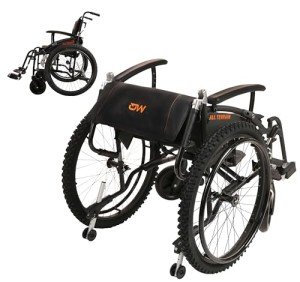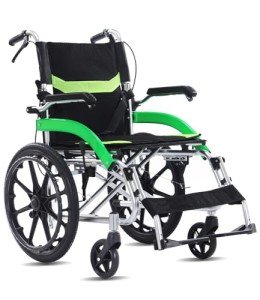5 Killer Quora Answers On How To Self Propel A Wheelchair
페이지 정보

본문
 how To self Propel A Wheelchair to Self Propeller a Wheelchair
how To self Propel A Wheelchair to Self Propeller a WheelchairLearning to self propelled all terrain wheelchair propel wheelchairs opens an entire new world of independence. But, it takes the right body posture and practice to master this.
A precise grip and pushing method is essential for the correct body positioning. This article will concentrate on these skills, as well as other aspects that are crucial to wheelchair propulsion.
Hand Positioning
self propelled wheelchair with elevated leg rest-propulsion is the most important element to self-propulsion. It's best self-propelled wheelchair to start with precision and work your way up to speed. By squatting while pushing, you can improve the stability and comfort of users, especially those who have upper body limitations. The hands should be positioned to be in line with the speed of the wheel and push evenly both hands, but without wrapping the thumbs around the hand-rims. This is a common mistake, as it reduces effectiveness and increases the force required for each stroke.
The path for recovery of the hands should be performed in a comfortable pendular pattern beneath the hand-rims following each propelling cycle to avoid contact with the rear wheels (a "semi-circular" recovery pattern). This helps reduce shoulder strain as well as limiting the number of strokes and the duration of each stroke to a minimum.
For more challenging surfaces it is often recommended that the wheelchair user utilize long strokes that allow for a full recovery (like the hand positioning on a clock). This can help to lessen shoulder injuries caused by repetitive motion, however it may also increase the load at the shoulders.
It is also possible to minimize shoulder injuries by utilizing the same position when driving and braking. If the user of a wheelchair can maintain a consistent rhythm in both of these actions it will be simpler to control the force applied and to adjust for differences in the terrain.
On slick or muddy surfaces it is important to lean slightly forward when moving to stop the wheels from sinking into the ground and falling over. You should test various trunk leans in order to find the right balance between too much and too little lean. As with any new skill, regular practice will lead to increased proficiency and confidence. Wheelchair propulsion is an essential skill for those who suffer from mobility issues. It can open up a whole world of freedom. Anyone can learn to operate in a manual wheelchair easily provided they have the proper technique, equipment and training. This entry was filed under News and classified as wheelchair.
Foot Positioning
The foot positioning of the person using the wheelchair is crucial to ensure stability. It is not always ideal when the wheelchair has feet that are too far apart since this makes it extremely difficult to self propel. However, sometimes it is necessary to navigate difficult terrain. If the user is climbing an extremely steep ramp or perhaps over some of the beautiful National Parks and beaches in the US, then the wheelchair needs wheels that can push over them to allow the user to move forward. The front wheels must be placed in the way shown below.
The user can pull the wheels in a single motion by grasping the wheels. This requires a lot of upper strength and is extremely difficult to accomplish however it is possible and can allow people who otherwise may not be able up or down hills accomplish this.
It is also crucial that the client is competent in doing wheelies to be able to go over obstacles like curbs or other people. In this position the client should place his left foot over the right side to lift themselves over the obstruction. The person will then lift their right leg and push it with their left hand to go over the obstacle. This is referred to as a"crown walk" and is an efficient method of moving a wheelchair over some of our more difficult terrain.
They are a great option for disabled or injured people who wish to move about without assistance. They are compact, lightweight and foldable, which means they require less space in the home than other mobility aids. With the help of accessories such as the E-Motion they can be converted into powerchairs, giving the user freedom to use their chair and the added benefit of electrical assistance when required.
Braking
self propelled wheelchairs for sale near me-propulsion of a wheelchair is a valuable skill for people with mobility issues. They can maneuver through a variety of types of terrains and conditions on their own. It also helps build strength in the shoulders and upper arms.
To propel a wheelchair forward the user should apply pressure to the rim of one hand while pulling up on the opposite side. The push-pull action creates momentum and moves the wheelchair in a desired direction. You can alter the speed of the wheelchair by applying a greater or less pressure to the wheels, or by using hand brakes when they're equipped.
The ideal push cycle should last for three hours or more. This will decrease the amount of duration that the shoulder is loaded and decrease the chance of injury due to repetitive strain. The speed that the wheelchair is pushed will be influenced by the width and size of the rear wheels. Smaller wheels are easier to maneuver, whereas larger wheels require more effort. Wheelchairs can also be designed with camber, which improves the ease of pushing by aligning the rear wheels with the biomechanics and mechanics of the shoulders and maximizing the lateral stability.
Wheelchair users who wish to improve their propelling technique should focus on getting the proper body posture, and practice in a secure environment, such as an empty parking lot or hall. The aim should be to develop long slow strokes that allow the wheelchair to coast between strokes.
It is also essential for the user to practice maneuvering when moving, for example, weaving around objects or taking turns. One method to do this is by weaving across cones, and then gradually moving into straight-line motion. The more you practice, the easier this will become.
Self-propelled wheelchairs are an ideal device to allow people to keep active and doing things they enjoy. They offer independence and can be a great method to socialize with friends or go to the movies, or even travel. You can regain or maintain your independence by learning to properly use a chair.
Stability
Self-propelling wheelchairs permit wheelchair users to be independent and go where they like without having to depend on others. It does require a good level of upper body strength to push the wheels along flat surfaces and up small hills. This is why a lot of wheelchair users choose an attendant controlled (also known as an attendant propelled) chair like the Action3 NG or ErgoLite 2 and are pushed by an attendant.
The act of grasping the hand rims in order to move manually in a wheelchair is among the most important aspects to master to ensure optimal efficiency and comfort. We have found that many customers use this type of wheelchair with the hand rims positioned too far in the forward direction. This means they must extend further backwards in order to move their arms. This isn't biomechanically efficient and can lead to shoulder strain.
The ideal hand-propulsion technique is a semicircular pattern in which the user alternates between the push phase of the wheelchair and the recovery phase. The push phase requires the user to push down on the casters, which is accomplished by a lot of small strokes. This push pattern also helps to exercise the shoulder retractor muscles and ensure a healthy range of motion.
The client should move their hands along the rims until their hands make contact with the casters. This allows the user to make some longer strokes and reduces the amount of friction in the recovery phase. Some wheelchair users use their hands to slide across the rims of their wheels in a smooth circular motion, however this isn't as efficient. It also causes an increase in wear on the wheels.
 The location of the rear wheels to allow self-propulsion is another important aspect of stability. If the wheel is placed too far in the rear, a client can slide off their wheelchair with ease. This could make it difficult to maneuver around obstacles and it's not a good idea for shoulder injuries. We must assess the strength of a patient's range of motion, muscle tone, and their orthopedic condition during the seating assessment to determine the right wheel position for them.
The location of the rear wheels to allow self-propulsion is another important aspect of stability. If the wheel is placed too far in the rear, a client can slide off their wheelchair with ease. This could make it difficult to maneuver around obstacles and it's not a good idea for shoulder injuries. We must assess the strength of a patient's range of motion, muscle tone, and their orthopedic condition during the seating assessment to determine the right wheel position for them.- 이전글How To Make A Successful Buy Driving License Category A Online Guides With Home 25.04.01
- 다음글What's Holding Back The Buy A C Driving License Online Industry? 25.04.01
댓글목록
등록된 댓글이 없습니다.


